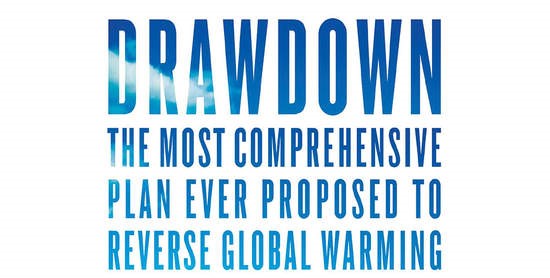Our News
The Most Effective Ways to Limit Climate Change Might Surprise You

With the increasing awareness of climate change comes increasing demands for effective solutions to limit the impacts of climate change on the planet. Project Drawdown is a coalition of researchers, scientists, graduate students, PhDs, post-docs, policy makers, business leaders and activists aiming to provide climate solutions over the next thirty years. The project has compiled a ranked list of the most effective climate change solutions by carbon dioxide reduction, net cost and savings.
A quiz was put together by CNN using Project Drawdown’s solutions, to test whether individuals knew which solutions provided the largest impact. The quiz shows that the most effective ways that individuals, businesses and policy-makers can reduce the impact of climate change are rather surprising (Take the quiz here – spoilers ahead!).
The first category was food which is one of the major contributors to greenhouse gases. A third of all food produced is wasted; interventions are needed at both consumer and retail levels, as well as in storage, processing and transportation. This solution to reduce food waste was the most effective according to Project Drawdown as the food we waste accounts for 8% of global emissions. As well as this, an important solution to climate change is to eat a more plant-heavy diet. Adopting a plant-based diet can reduce emissions by 63-70 per cent due to animal agriculture being one of the world’s biggest contributors to climate change.
The next category reflected on how we move people and goods – the solutions provided were electric cars, efficient shipping, flying less and high-speed trains. Driving an electric car was proven the most effective solution. If ownership of electric vehicles rises by 16% of total miles driven by 2050, 10.8 gigatons (1 gigaton = 1 billion tonnes!) of carbon could be avoided. More efficient shipping was also one of the most efficient solutions as forecasts predict that emissions from this industry could grow by 50% to 250% by 2050.

This is what one tonne of carbon dioxide would look like in a typical street…imagine what 1 gigaton would look like…
For the homes and cities category, the most effective solution was switching to LED lightbulbs. Although this seems like a small solution, it shows that making some seemingly small changes can have a large impact. By 2050, if the use of LED lighting in households increases to 90%, 7.8 gigatons of carbon can be avoided. Other solutions included designing more walkable cities, smart thermostats and installing green rooftops.
How we use our land was the next category which included solutions such as protecting and restoring tropical rainforests, planting more bamboo, returning land to indigenous people and preserving coastal wetlands. The protection and restoration of tropical rainforests was the most effective solution, which may not come as a surprise due to the vast amount of deforestation we’ve seen. Tropical rainforests are essential for storing carbon; if they were restored on 435 million acres, they could sequester 60.2 gigatons of carbon emissions by 2050.
In regard to electricity use, along with solar farms, nuclear power and wave power, the most effective solution was wind energy on land. Investing in wind farms offers a great reduction in carbon by 84.6 gigatons by 2050 with only a 3 or 4 per cent increase in usage. Project Drawdown suggests that due to wind turbines only using a small footprint of land, the same land can be used for grazing, farming, recreation or conservation, maximising land use.
It may come as a surprise that empowering women can have an impact on reducing climate change. The education of girls and increasing their access to family planning were two solutions provided by Project Drawdown. Both solutions are powerful tools to reduce emissions by slowing population growth as women with more years of education have fewer and healthier children. By investing in education for women, Project Drawdown estimate by 2050, 51.8 gigatons of carbon emissions can be saved. This is a substantial saving which may be overlooked as it may be less obvious in relation to other solutions.
Waste management is a major contributor to climate change. It may be surprising to find out that the number one most efficient overall solution to curb climate change would be to clean up the chemicals in refrigerators and air conditioners. Refrigerators are responsible for releasing toxic chemicals which can be 1,000 to 9,000 times more harmful than carbon dioxide. Over the next thirty years, if 87% of refrigerant gasses can be contained, the equivalent of 89.7 gigatons of carbon emissions can be avoided.
So, the top five most efficient, large-scale solutions for climate change are:
- Refrigerant gas management
- Wind turbines
- Reduce food waste
- Eat a plant-based diet
- Tropical forest restoration
These five solutions suggest that limiting the impacts of climate change is well within our reach. We already have the means and technology to effectively carry out all the solutions above, two of which can easily be carried out on an individual level (3 and 4) which goes to show that individual action can and does have a significant impact in preventing runaway climate change.
To find out more about Project Drawdown’s solutions click here.